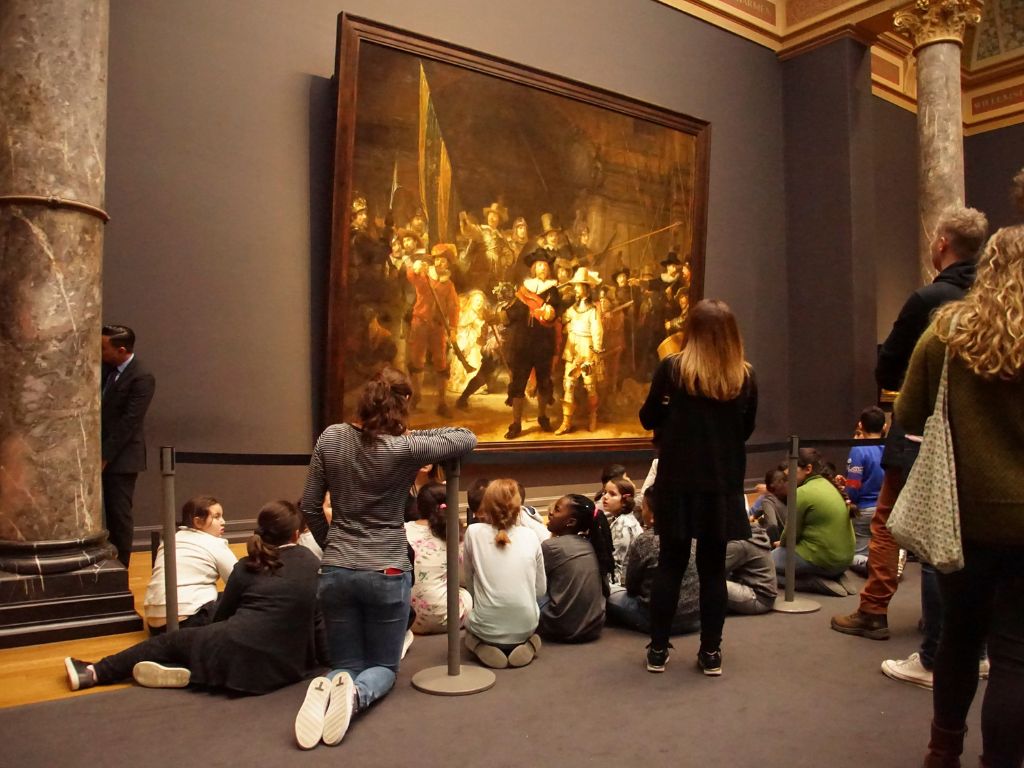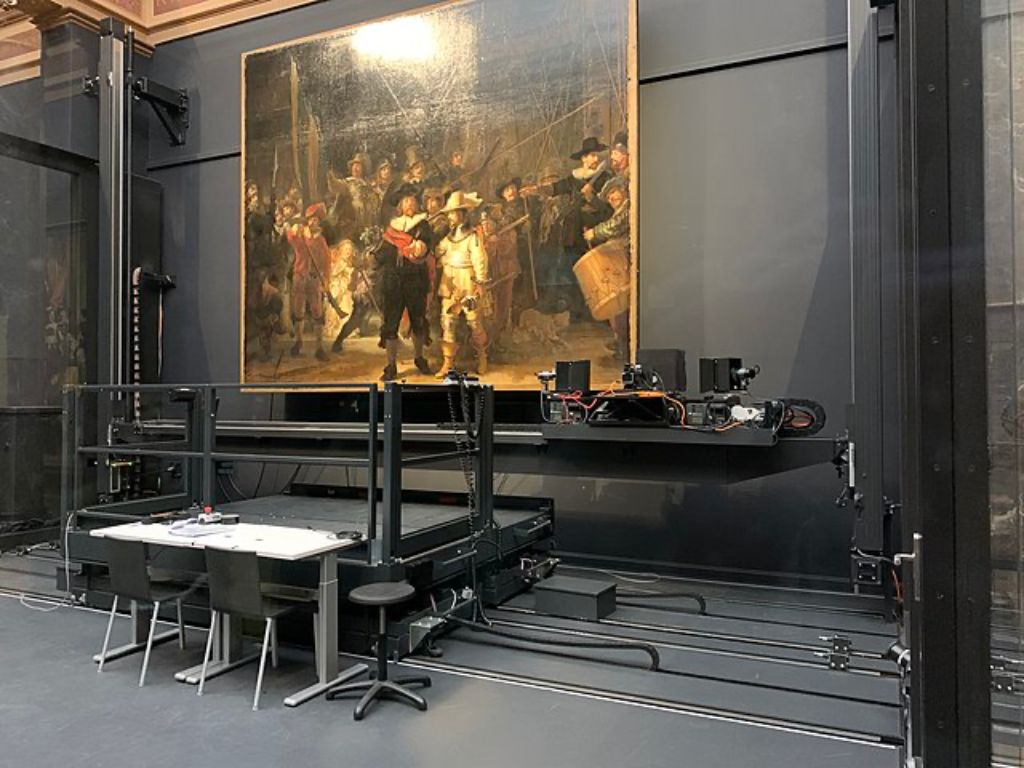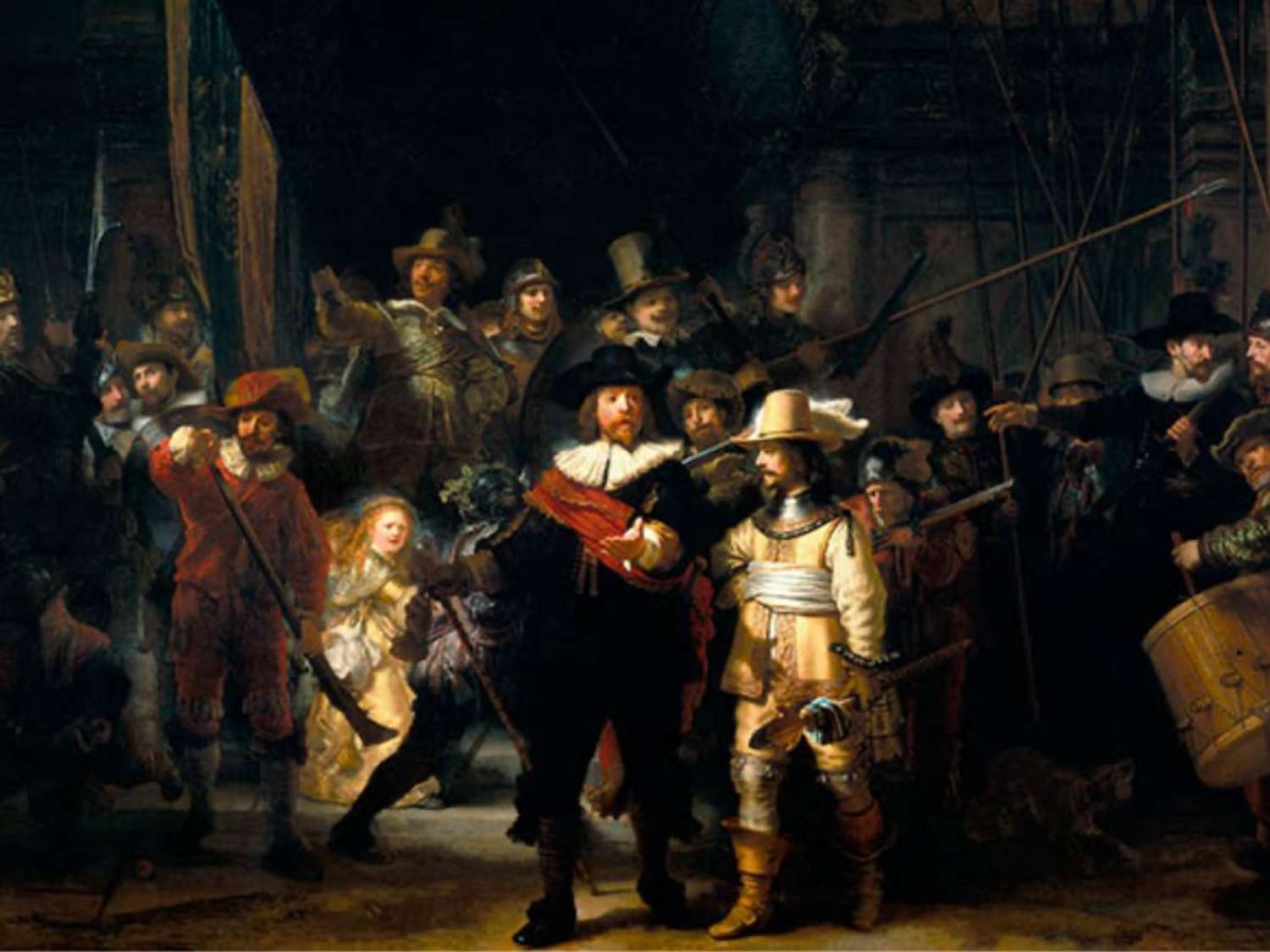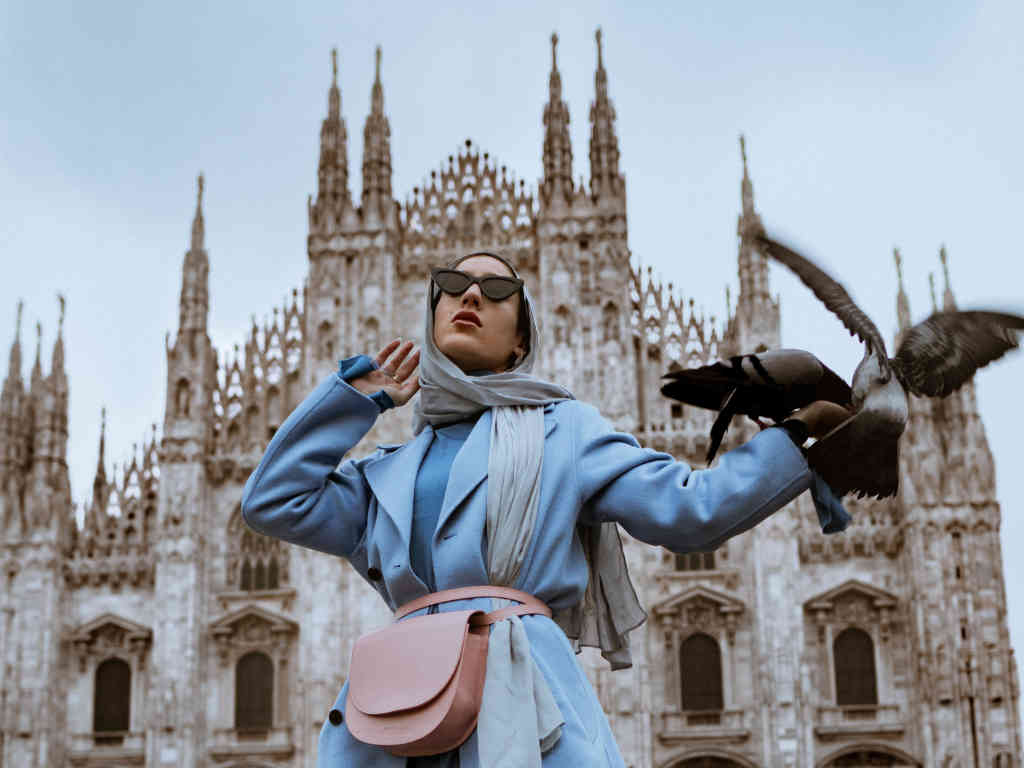With every great work of art comes to its fair share of controversy. It’s difficult to be revolutionary without just a smidge of challenge and adverse reaction from the greater public. Artists like your Rembrandts and your Caravaggios pushed boundaries and stretched the imagination so we remember their names for the revolutionary work that they produced. The contributions of Rembrandt are plenty and there’s no doubt that the painter was busy. On his long list of famed paintings, you will find portraits, landscapes, allegories, biblical scenes, historical representations, and so much more. But since its debut in 1642, The Night Watch has particularly drawn curious eyes towards its enigmatic scene and large composition. What’s the painting about and why exactly was it controversial? What makes so many travelers around the world flock to Amsterdam’s Rijksmuseum to feast their eyes upon its glory? We’ll surely find out, but first, let’s learn a little about our bold Dutch artist.
Who painted The Night Watch?
Rembrandt Harmenszoon van Rijn is renowned as one of the greatest Dutch painters, perhaps the most important in all of Dutch art history. Active during the Dutch Golden Age, Rembrandt depicted a wide range of themes in his work, which wasn’t always the norm at the time. What made this artist really stand out was his sharp observations of human society. His use of strong contrast and dramatic lighting was not only innovative but also an expertly used tool to express emotion and the spirit of his paintings.
What is the painting about?
We can see the use of contrast and its effects pretty clearly in The Night Watch. Commissioned in 1639 by Captain Banninck Cocq and members of the Kloveniers, a group of civic-military guards, the scene depicts these civic militiamen carrying out their duties with a manner of dignity and pride. These kinds of public paintings were prevalent and unique to the Northern Netherlands. Many of them were commissioned by the city of Amsterdam to foster a sense of pride and civic duty. To do this, Rembrandt emphasized the prominence of Captain Frans Banning Cocq at the center of the painting along with his lieutenant, Willem van Ruytenburgh. There is a clear order of social class between them as the Captain wears formal attire, a white lace collar, and a red sash, and symbols to identify his military rank like his baton. His hand is outstretched in the way a powerful leader would command, and Willem van Ruytenburgh, who is also wearing clothes that indicate his military role, turns to accept his orders. Beyond these leaders, 16 other members of the Kloveniers occupy space in the painting, their names all recorded on a shield in the background. In the painting, Captain Frans Banning Cocq is ordering his band of civic guards to march out, giving the piece a sense of movement (more on that later).

The dramatic contrast of light serves to highlight the importance of the two figures in the foreground, the bold leaders of the civic guards, as well as the collective importance of the Kloveniers’ responsibility to keep the city safe. For example, have you noticed the bright golden girl? Aside from the leaders, our eyes are also drawn to the light she emanates. The painting is rife with symbols of the guards, and the girl represents the Kloveniers as protectors of the public. Most curiously, she has a large white chicken that hangs from her waistband. Rembrandt likely included this detail as another marker of the guild’s insignia. The Kloveniers emblem was a golden claw on a blue field, so the chicken could be a protective charm for the girl. It has also been said that the girl could pose as a mascot for the company.
What makes the painting unique?
A couple of different factors cemented The Night Watch as one of the greatest works in art history, especially in regard to its aesthetic components. Many things make this painting interesting, but a few things make it revolutionary. Here are some of those characteristics:
- One other unconventional aspect of the piece is that it was one of the first paintings to portray a group in action. Traditionally military group portraits have been static and posed to observe the observer. Rembrandt, however, cultivates a sense of motion in these characters that lead, pull out their weapons, and embody their personalities in other ways as the Kloveniers move out into action.
- The masterpiece is HUGE. It takes up an entire wall at the Rijksmuseum. Standing at 12 by 14 and a half feet (or 363 by 437 centimeters), the painting’s colossal size adds to its drama, detail, and uniqueness.
- As we’ve mentioned before*,* Rembrandt is skillful in his techniques using light in The Night Watch. His use of tenebrism, a dramatic form of contrast between light and dark, illuminates the piece exactly the way Rembrandt wanted it to. Group portraits preceding Rembrandt would often highlight characters evenly, but the artist shrouded most figures in darkness, emphasizing status and rank.
Why did Rembrandt name the painting The Night Watch?
Interestingly enough, Rembrandt did not name the painting The Night Watch. True to its content, the original name of this masterpiece was actually Officers and Men of the Company of Captain Frans Banning Cocq and Lieutenant Wilhelm van Ruytenburgh, which is decidedly not as good of a name. Its replaced title is actually misleading — the events of the painting did not occur in the nighttime at all, though it appears to be that way. People began to call the painting The Night Watch in the late 18th century when the artwork had darkened over the years due to a build up of dirt and varnish. We’d like to think that this was a twist of fate that worked in the painting’s favor. The added hue of night gives Rembrandt’s illustration an added drama that gives the piece a refined quality.
Why was The Night Watch Controversial?
The controversy in The Night Watch comes less from its specific subject matter than it does the way that Rembrandt chose to portray the group. A man of bold and innovative ideas, the artist actively challenged the status quo in the affairs of art. Rather than simply conjuring an image of a guild, Rembrandt chose instead to convey a story. It would be easy enough to sit every member down and draw their faces, but our artist chose to create something new. In doing so, he may have lost some friends along the way.
When choosing to highlight Captain Frans Banning Cocq, Willem van Ruytenburgh, and the girl with the chicken attached to her waistband, the other 16 group members fade into the obscurity of darkness. The motion and action of the march, emphasized by the contrast, make the piece distinctive but Rembrandt had to make a definitive decision on who to focus on with the technique. The choice to emphasize the captain and lieutenant makes sense to create a story and reveal a snapshot of a moment.
Can you imagine the moment Rembrandt disclosed his work to the commissioners? He was told to paint a group portrait for a group of civic-military guards, perhaps the most straightforward a painting could be. Instead, our revolutionary artist went with a piece far more complex and changed the rules of art history forever.
Why was The Night Watch attacked?
Like many prized possessions in history, The Night Watch has been subject to vandalizing, attack, and destruction over the centuries since its completion. In fact, people have attempted to harm the painting most famously during three separate events all in the 20th century.
January 13, 1911
In the first of the three incidents, this attempt at destruction was made by an unemployed shoemaker protesting his lack of work. He tried to slash the painting with a knife, but fortunately, the thick varnish that gave the masterpiece its dark appearance also protected it against any damage from the knife.
September 14, 1975
A knife was also used in this next attempt at destroying The Night Watch, albeit a duller one. On this fateful day in September, an unemployed school teacher by the name of Wilhelmus de Rijk attacked the painting with a bread knife, claiming that he “did it for the lord.” While it was restored four years later, some evidence of the slashes, which were up to 12 inches in length, can still be seen up close.
April 6, 1990
The last incident of vandalism involved a spray bottle of acid. An escaped patient from a psychiatric hospital attempted to spray the substance on the canvas but security guards were luckily able to intervene in time. Like the first attempt in 1911, the varnish helped protect the painting from any heavy damage.
Trimming the painting down
And would you believe that these events weren’t the only ones to have altered the painting? In fact, only a century later The Night Watch was intentionally trimmed when it was moved from Kloveniersdoelen to the Town Hall of Amsterdam, now the Palace at Dam Square. The large painting used to reside in the large hallways of the Kloveniersdoelen, the headquarters of the Kloveniers, but the new location could not accommodate such a colossal size. Trimming the sides meant that the painting lost two whole characters! Furthermore, nobody actually knows where these sides of the canvas went.
Plans for restoration and recent findings
How disappointing it’d be if the damage to The Night Watch — the trimmings and the various stabbings — were to have been permanent. Thankfully, in 2019 the Rijksmuseum began an arduous restoration process to heal the painting completely. So treasured is The Night Watch that the restoration initially took place outside the museum in a glass enclosure, was live-streamed, and was available for the public to see in real-time. Technology for restoration efforts is incredibly advanced these days too. Using AI, a team of researchers has been able to signal to a computer Rembrandt’s specific painting style. From there, researchers have replicated a copy of the piece that has restored the slashes and the trims. You can see this copy as well at the National Gallery in London. Plans to restore the painting continue well into the present.

Another very cool aspect of the restoration project is the never-before-seen, hidden findings of Rembrandt’s early process. Using Macro-XRF imaging, an advanced type of X-ray, researchers have found initial sketches, made of chalk and beige paint, that Rembrandt used to lay out the foundation of his masterpiece. What will they find next?
How much is The Night Watch Worth?
Rembrandt was commissioned by the Kloveniers to paint The Night Watch for 1,600 guilders, which is about 726 euros or 828 US dollars, which doesn’t seem like a very reasonable estimate for our celebrated artist.
Upon the second stabbing of the painting, it was valued at about $925,000, which still seems like an unfair sum for this timeless work of art. However, the painting belongs to the city of Amsterdam and will never be sold again. For all intents and purposes, there can be no dollar amount attached to the priceless Night Watch.
How can I experience The Night Watch with Context?
Context provides a variety of ways for you to experience the incredible painting in-depth and with a scholar who knows Rembrandt’s story intimately.
Join us on a Context tour at the Rijksmuseum:
On this Rijksmuseum tour with skip-the-line tickets, you’ll get the chance to not only explore the famed painting, but also other treasures of the world’s greatest museums accompanied by an expert in art history. You’ll stop to view many of the famous Old Masters, including our Rembrandt, but also Vermeer, and other lesser-known Dutch artists.
Join us on Rijksmuseum Tour for Kids: Cabinet of Curiosities where kids can also enjoy the museum's treasures in an interactive and engaging experience.
Interested in just Rembrandt? Join us on Rembrandt's Amsterdam Tour
Rembrandt’s legacy is mapped all across Amsterdam’s streets and canals. You’ll get a taste of this artistic master’s life beyond The Night Watch. You’ll begin in Rembrandt’s House, a small museum dedicated to the artist and his time, and then you’ll walk around the city to key sites associated with the artist's life.
Join us online for a seminar on Dutch history
Can’t make it to Amsterdam? Context also offers online seminars and courses on hundreds of different topics with an expert. With degrees in Art History and a Ph.D. in 17th Dutch History, our scholar Alette Fleischer is the perfect guide on Dutch history, culture, and society.













